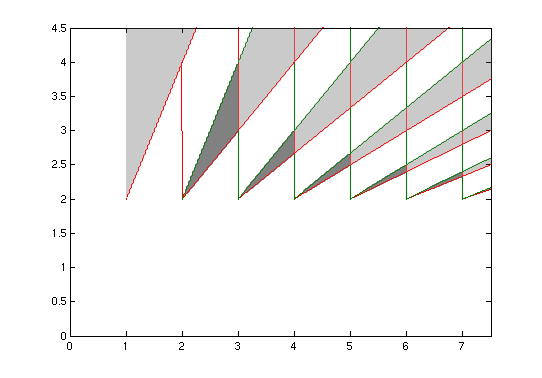The quoted text in the question is a case of using bandpass sampling or undersampling.
Here, to avoid aliasing distortion, the signal of interest must be bandpass. That means that the signal's power spectrum is only non-zero between $f_L < |f| < f_H$.
If we sample the signal at a rate $f_s$, then the condition that the subsequent repeated spectra do not overlap means we can avoid aliasing. The repeated spectra happen at every integer multiple of $f_s$.
Mathematically, we can write this condition for avoiding aliasing distortion as
$\frac{2 f_H}{n} \le f_s \le \frac{2 f_L}{n - 1}$$$\frac{2 f_H}{n} \le f_s \le \frac{2 f_L}{n - 1}$$
where $n$ is an integer that satisfies
$1 \le n \le \frac{f_H}{f_H - f_L}$$$1 \le n \le \frac{f_H}{f_H - f_L}$$
There are a number of valid frequency ranges you can do this with, as illustrated by the diagram below (taken from the wikipedia link above).

In the above diagram, if the problem lies in the grey areas, then we can avoid aliasing distortion with bandpass sampling --- even though the sampled signal is aliased, we have not distorted the shape of the signal's spectrum.
